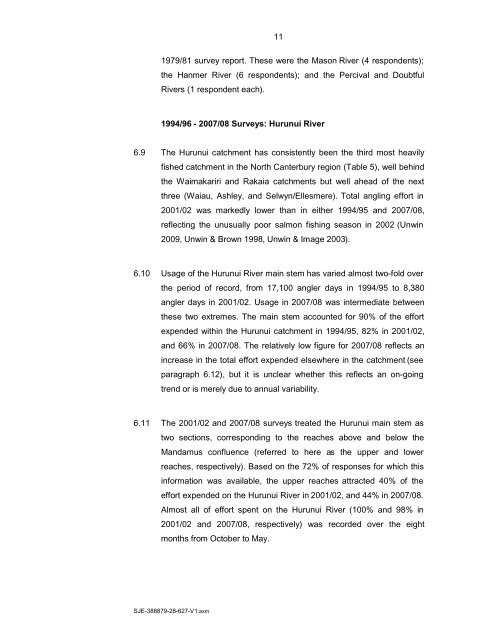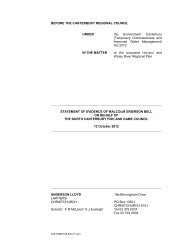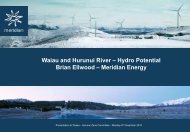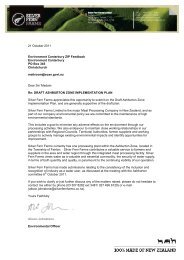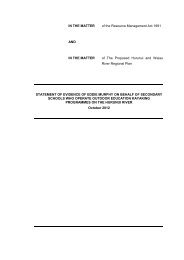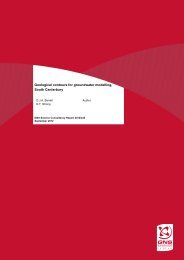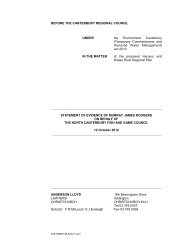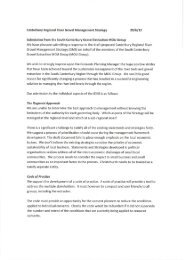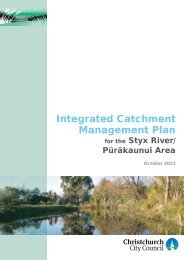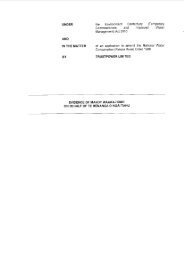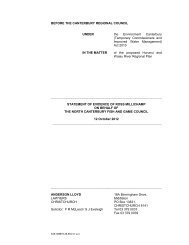Evidence of Martin Unwin - Environment Canterbury
Evidence of Martin Unwin - Environment Canterbury
Evidence of Martin Unwin - Environment Canterbury
Create successful ePaper yourself
Turn your PDF publications into a flip-book with our unique Google optimized e-Paper software.
111979/81 survey report. These were the Mason River (4 respondents);the Hanmer River (6 respondents); and the Percival and DoubtfulRivers (1 respondent each).1994/96 - 2007/08 Surveys: Hurunui River6.9 The Hurunui catchment has consistently been the third most heavilyfished catchment in the North <strong>Canterbury</strong> region (Table 5), well behindthe Waimakariri and Rakaia catchments but well ahead <strong>of</strong> the nextthree (Waiau, Ashley, and Selwyn/Ellesmere). Total angling effort in2001/02 was markedly lower than in either 1994/95 and 2007/08,reflecting the unusually poor salmon fishing season in 2002 (<strong>Unwin</strong>2009, <strong>Unwin</strong> & Brown 1998, <strong>Unwin</strong> & Image 2003).6.10 Usage <strong>of</strong> the Hurunui River main stem has varied almost two-fold overthe period <strong>of</strong> record, from 17,100 angler days in 1994/95 to 8,380angler days in 2001/02. Usage in 2007/08 was intermediate betweenthese two extremes. The main stem accounted for 90% <strong>of</strong> the effortexpended within the Hurunui catchment in 1994/95, 82% in 2001/02,and 66% in 2007/08. The relatively low figure for 2007/08 reflects anincrease in the total effort expended elsewhere in the catchment (seeparagraph 6.12), but it is unclear whether this reflects an on-goingtrend or is merely due to annual variability.6.11 The 2001/02 and 2007/08 surveys treated the Hurunui main stem astwo sections, corresponding to the reaches above and below theMandamus confluence (referred to here as the upper and lowerreaches, respectively). Based on the 72% <strong>of</strong> responses for which thisinformation was available, the upper reaches attracted 40% <strong>of</strong> theeffort expended on the Hurunui River in 2001/02, and 44% in 2007/08.Almost all <strong>of</strong> effort spent on the Hurunui River (100% and 98% in2001/02 and 2007/08, respectively) was recorded over the eightmonths from October to May.SJE-388879-28-627-V1:axm


